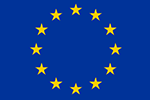Public health activities
Content
Health promotion and disease prevention
Chronic or non-communicable diseases
The most common diseases, both globally and in Spain, are chronic diseases, also known as non-communicable diseases (e.g. cardiovascular disease, cancer, diabetes, chronic respiratory diseases, etc.).
The main chronic diseases are associated with well-known factors such as unhealthy eating, a lack of physical activity and sedentary behaviour, smoking![]() and drinking alcohol
and drinking alcohol![]() , which in turn are influenced by people’s living conditions and circumstances. A healthy lifestyle (a healthy diet, following public recommendations on physical activity
, which in turn are influenced by people’s living conditions and circumstances. A healthy lifestyle (a healthy diet, following public recommendations on physical activity![]() , reducing sedentary behaviour, not smoking or drinking alcohol, etc.) benefits our health and wellbeing and reduces the risk of us developing these diseases.
, reducing sedentary behaviour, not smoking or drinking alcohol, etc.) benefits our health and wellbeing and reduces the risk of us developing these diseases.
The Spanish Ministry of Health has drawn up a Strategy on Health Promotion and Prevention for the National Health System![]() . It also has a webpage on ‘Healthy Lifestyles’
. It also has a webpage on ‘Healthy Lifestyles’![]() aimed at the population as a whole, with recommendations, interactive tools, videos and other useful materials and resources to encourage healthier lifestyles.
aimed at the population as a whole, with recommendations, interactive tools, videos and other useful materials and resources to encourage healthier lifestyles.
The strategy also includes actions to improve safety and protection against unintentional injuries![]() , to promote healthy ageing and to prevent frailty, falls
, to promote healthy ageing and to prevent frailty, falls![]() and ageism
and ageism![]() .
.
Promoting health and disease prevention in children and teenagers is fundamental to improving public health and achieving health equity. Particularly important are the promotion of breastfeeding , the prevention of childhood obesity and health promoting schools .
Violence against children and adolescents![]() is also a major preventable and avoidable public health problem. A global approach based on a preventive, scientific and comprehensive strategy is therefore necessary.
is also a major preventable and avoidable public health problem. A global approach based on a preventive, scientific and comprehensive strategy is therefore necessary.
Vaccine-preventable communicable diseases
Vaccination![]() is the main tool for preventing communicable diseases
is the main tool for preventing communicable diseases![]() , and is one of the most cost-effective public health measures. It is the best defence against serious, and sometimes fatal, diseases that are preventable by vaccination. Through public vaccination strategies
, and is one of the most cost-effective public health measures. It is the best defence against serious, and sometimes fatal, diseases that are preventable by vaccination. Through public vaccination strategies![]() , it has been possible to eradicate smallpox, eliminate polio in several regions of the World Health Organisation, eliminate measles and rubella in Spain, and control most vaccine-preventable diseases.
, it has been possible to eradicate smallpox, eliminate polio in several regions of the World Health Organisation, eliminate measles and rubella in Spain, and control most vaccine-preventable diseases.
In 2018, the Ministry and the Autonomous Communities (within the Interterritorial Council of the National Health System) agreed on a common lifetime vaccination schedule![]() which sets out vaccination recommendations each year. They include pre-natal vaccinations (vaccinations for pregnant women), as well as vaccinations for the elderly and people with at-risk conditions
which sets out vaccination recommendations each year. They include pre-natal vaccinations (vaccinations for pregnant women), as well as vaccinations for the elderly and people with at-risk conditions![]() . The vaccination schedule currently in place
. The vaccination schedule currently in place![]() recommends vaccinating against 16 diseases that are prevented by vaccination.
recommends vaccinating against 16 diseases that are prevented by vaccination.
The common lifetime vaccination schedule evolves all the time and is under continuous evaluation![]() . The schedule is evaluated to modify or incorporate vaccines on the basis of recommendations set out in the ‘Evaluation criteria to inform changes to the vaccination programme’
. The schedule is evaluated to modify or incorporate vaccines on the basis of recommendations set out in the ‘Evaluation criteria to inform changes to the vaccination programme’![]() .
.
In Spain, vaccination is not mandatory, and the vaccination schedule has a high uptake by most of the public and by health professionals. Vaccine coverage![]() is generally above 95 % for vaccines recommended for infants up to the age of 24 months, and there is a slight decrease in the coverage rate thereafter as ages rise.
is generally above 95 % for vaccines recommended for infants up to the age of 24 months, and there is a slight decrease in the coverage rate thereafter as ages rise.
The vaccination coverage![]() in Spain is published annually.
in Spain is published annually.
Other preventive measures Screening programmes
Public screening programmes![]() are an important secondary preventive measure for improving public health.
are an important secondary preventive measure for improving public health.
These programmes target people with no symptoms who have not sought medical help, so as to detect diseases early. In this way, they can obtain early diagnosis and treatment so as to improve the disease prognosis, avoid premature mortality, and prevent against related physical and mental disabilities.
They are implemented as a standardised evidence-based process, in a coherent and fair way under the National Health System in Spain. Eligible members of the general public can access these programmes under the criteria set out in each case both for the target public and specific aspects of each programme.
The public screening programmes forming part of the portfolio of common services under the National Health System and their targeted public are:
- Prenatal screening programmes
 : for all pregnant women who attend a health centre for pregnancy check-ups.
: for all pregnant women who attend a health centre for pregnancy check-ups.
- Pre-natal screening programme for infectious diseases:
 this involves a series of tests for pregnant women for early detection of some infectious diseases that could be dangerous if transmitted to the foetus.
this involves a series of tests for pregnant women for early detection of some infectious diseases that could be dangerous if transmitted to the foetus. - Pre-natal chromosomopathy screening programme:
 this involves a series of tests for pregnant women for early detection of genetic diseases of the foetus.
this involves a series of tests for pregnant women for early detection of genetic diseases of the foetus.
- Pre-natal screening programme for infectious diseases:
- Neonatal screening programmes:
 for all newborn infants.
for all newborn infants.
- Neonatal heel prick screening programme for congenital diseases : this is a test for measuring various parameters from a blood sample taken from the heel of newborn infants in the first hours of life.
- Neonatal hypoacusis screening programme:
 this is a test that uses different techniques (otoacoustic emissions or evoked potentials) in both ears of newborn infants in the first days of life.
this is a test that uses different techniques (otoacoustic emissions or evoked potentials) in both ears of newborn infants in the first days of life. - Neonatal screening programme for critical congenital heart disease:
 this programme is currently in the final stage of the regulatory process. The screening test is performed by pulse oximetry to measure the oxygen saturation of newborn infants in the first hours of life.
this programme is currently in the final stage of the regulatory process. The screening test is performed by pulse oximetry to measure the oxygen saturation of newborn infants in the first hours of life.
- Cancer-screening programmes
 Breast, colorectal and cervical.
Breast, colorectal and cervical.
- Mammogram cancer-screening programme:
 this is offered to all women aged between 50 and 69, and consists of a mammogram done every two years.
this is offered to all women aged between 50 and 69, and consists of a mammogram done every two years. - Colorectal cancer-screening programme:
 this is offered to men and women aged between 50 and 69, who are screened every two years by means of a faecal occult blood test.
this is offered to men and women aged between 50 and 69, who are screened every two years by means of a faecal occult blood test. - Cervical cancer-screening programme:
 this is offered to all women aged between 25 and 65 and consists of a cervical smear or high-risk HPV (human papillomavirus) screening, according to age.
this is offered to all women aged between 25 and 65 and consists of a cervical smear or high-risk HPV (human papillomavirus) screening, according to age.
- Mammogram cancer-screening programme:
Social determinants of health
Our health is dependent on the circumstances in which we are born and in which we grow, live, work and age. These circumstances encompass all aspects of our lives: socio-economic conditions, the culture and values of society, the policies in place, type of work and working conditions, education, gender, housing conditions, health services, etc. These are known as the social determinants of health. The fact that our health depends on those factors, and that those factors are not equal among the population generates health inequalities which, being of social origin, are considered to be unfair and avoidable.
Achieving health equity![]() would give all people the opportunity to attain their full health potential regardless of their social position or other socially determined circumstances.
would give all people the opportunity to attain their full health potential regardless of their social position or other socially determined circumstances.
Commercial determinants of health are strategies used by the private sector to promote products and choices that are detrimental to people's health and which play a key role in our environment and our individual lifestyles, thus impacting the public health. The term also encompasses strategies and tactics that companies use to exert power and influence on governments, society and consumers. Commercial determinants of health are a key social determinant.
Response to health alerts and emergencies
In Spain, the Health Alert and Emergency Coordination Centre coordinates the management of information and provides support in the response to national or international health alerts or emergencies which pose a threat to the health of the population.
To this end, the National Early Warning and Rapid Response System ![]() was set up.
was set up.
In turn, public health surveillance![]() encompasses the processes of collecting, analysing, interpreting and disseminating data relating to the health of the population and the factors that affect it, in order to inform public health activities.
encompasses the processes of collecting, analysing, interpreting and disseminating data relating to the health of the population and the factors that affect it, in order to inform public health activities.
Prevention and control of HIV, STIs, viral hepatitis and tuberculosis
HIV, STI, viral hepatitis and tuberculosis epidemics have common social determinants and shared individual risk factors. This is why epidemics overlap in some population groups, and action plans require integrated approaches and complementary responses and solutions.
Since 2018, the Division for the Control of HIV![]() , STIs, Viral Hepatitis and Tuberculosis has published annual reports
, STIs, Viral Hepatitis and Tuberculosis has published annual reports![]() on the activities of this section of the Directorate-General for Public Health.
on the activities of this section of the Directorate-General for Public Health.
HIV prevention and control
The plenary of the Interregional Council of the National Health System adopted the Plan for the Prevention and Control of HIV and other STIs 2021-2030![]() . This Plan has an extended timeline so as to facilitate the assessment of measures taken and align them with both the Sustainable Development Goals and the proposed UNAIDS’ targets for 2030.
. This Plan has an extended timeline so as to facilitate the assessment of measures taken and align them with both the Sustainable Development Goals and the proposed UNAIDS’ targets for 2030.
The overall objective of the Plan is to promote and coordinate actions to eliminate HIV and STIs as a public health problem by 2030, through prevention, early diagnosis and treatment of these infections, chronic disease care and improvements to quality of life, as well as by addressing stigma and discrimination linked to HIV and other STIs in Spain.
The Plan includes the guiding principles of universal health coverage, health equity, ownership, coordination and complementarity as the inspiration for all related actions. It also integrates cross-cutting approaches keeping the focus on rights, gender, migration and sexual diversity, the social determinants of health and community participation and actions founded on scientific evidence and innovation.
The Plan defines four strategic objectives and a set of cross-cutting elements, comprising equal rights, equal treatment and opportunities, non-discrimination and the full exercise of fundamental rights on the basis of the Social Contract, and improvements to the health information and governance systems.
In Spain, the estimates for continuing HIV care published in 2020![]() were as follows: 87 % for people with diagnosed HIV, -97.3 % for those undergoing antiretroviral treatment, and -90.4 % for those receiving viral suppression treatment. The main focus of HIV prevention is to diagnose HIV as early as possible in order to control HIV transmission.
were as follows: 87 % for people with diagnosed HIV, -97.3 % for those undergoing antiretroviral treatment, and -90.4 % for those receiving viral suppression treatment. The main focus of HIV prevention is to diagnose HIV as early as possible in order to control HIV transmission.
The Social Contract for Non-Discrimination and Equal Treatment of Persons with HIV![]() is essential for combatting stigma and discrimination in all areas of life, and for improving the quality of life of persons with HIV (known as ‘the fourth 95’).
is essential for combatting stigma and discrimination in all areas of life, and for improving the quality of life of persons with HIV (known as ‘the fourth 95’).
Prevention efforts are accompanied by information campaigns![]() addressed to target audiences. There should be a special focus on campaigns targeting men who have sex with men (MSM) and young people, as well as campaigns around World AIDS Day.
addressed to target audiences. There should be a special focus on campaigns targeting men who have sex with men (MSM) and young people, as well as campaigns around World AIDS Day.
A strategic pillar in the development of public health interventions aimed at preventing HIV infection and other STIs is programme funding for community-based non-profit organisations with country-wide deployment and proximity and access to the most vulnerable and exposed groups. Every year, there is a call for grants for projects and programmes for the prevention and control of HIV![]() infection.
infection.
To obtain better information on early diagnosis in community settings, the RedCoHIV project has been launched to examine the extent of rapid-testing for HIV infection and the diagnostic performance of these tests.
Progress has been made by adopting an innovative approach to prevention strategies, through pre-exposure prophylaxis![]() and better accessibility to condoms for under-resourced and vulnerable groups. Of particular importance is the creation of the SIPrEP information system, which provides information on the characteristics of the target population accessing this healthcare service. The complex phenomenon of chemsex is also being tackled, with a series of recommendations for public health action being prepared with the most relevant stakeholders, and clinical guidelines for diagnosis and antiretroviral treatment being drawn up.
and better accessibility to condoms for under-resourced and vulnerable groups. Of particular importance is the creation of the SIPrEP information system, which provides information on the characteristics of the target population accessing this healthcare service. The complex phenomenon of chemsex is also being tackled, with a series of recommendations for public health action being prepared with the most relevant stakeholders, and clinical guidelines for diagnosis and antiretroviral treatment being drawn up.
Prevention and control of Sexually Transmitted Infections (STIs)
The main goal is to reduce the incidence of STIs![]() , encourage early diagnosis and improve the study of contacts, as well as preventing comorbidities and resistant forms of infection. Prevention among young people and in the MSM group is the priority, in view of the incidence rate among these groups. Campaigns are organised containing tailored information and encouraging condom use among different groups of special epidemiological interest.
, encourage early diagnosis and improve the study of contacts, as well as preventing comorbidities and resistant forms of infection. Prevention among young people and in the MSM group is the priority, in view of the incidence rate among these groups. Campaigns are organised containing tailored information and encouraging condom use among different groups of special epidemiological interest.
The objectives of the 2021-2030 Plan for the Prevention of HIV and other STIs include increasing awareness of actions and infrastructures dedicated to STIs, as well as improving early diagnosis of STIs in key groups. To this end, various structural actions have been initiated in the health system, such as a review of the actions taken in the field of STI prevention and control in the different autonomous communities![]() , a definition of the medical care infrastructures dedicated to STIs in Spain
, a definition of the medical care infrastructures dedicated to STIs in Spain![]() , a review of the regulatory framework for rapid testing in community settings
, a review of the regulatory framework for rapid testing in community settings![]() , and the study of new ways of improving early diagnosis of HIV and other STIs based on self-testing and self-sampling.
, and the study of new ways of improving early diagnosis of HIV and other STIs based on self-testing and self-sampling.
Prevention and control of tuberculosis
Tuberculosis, particularly drug-resistant and multidrug-resistant strains, continues to pose a threat to public health. The aim at national level is to stop the transmission of tuberculosis through universal access to prevention, diagnosis and treatment. Spain’s activities are described in the Plan for the Prevention and Control of Tuberculosis in Spain![]() .
.
The Plan sets out the main actions in terms of early diagnosis, epidemiological surveillance, study of contacts and treatment management, in line with the global ‘End TB’ strategy and the Agenda 2030 Sustainable Development Goals. The Plan includes coordinated actions with other sectors, with the competent bodies of the autonomous communities and cities, with the Laboratory Network for TB and with scientific and civil society organisations.
Monitoring indicators![]() are collected for the Plan for the Prevention and Control of Tuberculosis in Spain and published annually.
are collected for the Plan for the Prevention and Control of Tuberculosis in Spain and published annually.
Prevention and control of viral hepatitis
The aim is to eliminate the public health issue posed by viral hepatitis.
In Spain, hepatitis C remains a significant public health concern which requires integrated political, health and social responses, with prevention and equal access to treatment being the key pillars of action. The Strategic Plan for Tackling Hepatitis C![]() is aimed at promoting the prevention and diagnosis of hepatitis C virus infection in order to reduce morbidity and mortality rates in Spain. Various documents
is aimed at promoting the prevention and diagnosis of hepatitis C virus infection in order to reduce morbidity and mortality rates in Spain. Various documents![]() , such as one on hepatitis C screening recommendations
, such as one on hepatitis C screening recommendations![]() , have been drawn up for this purpose.
, have been drawn up for this purpose.
Environmental health
Our health and the environment![]() that surrounds us are closely linked. The quality of the air
that surrounds us are closely linked. The quality of the air![]() we breathe and the sanitary quality of water
we breathe and the sanitary quality of water![]() for consumption or for recreational use have major implications for our health and wellbeing. For this reason, in order for us to stay healthy, the quality and health of our environment are vital.
for consumption or for recreational use have major implications for our health and wellbeing. For this reason, in order for us to stay healthy, the quality and health of our environment are vital.
Other environmental factors that have an impact on our health include the cold , extreme heat , hazardous chemicals, some physical agents including electromagnetic fields , ionising radiation (radon) and noise , and some biological agents (e.g. Legionella and disease-carrying vectors ).
The dangers that climate change![]() poses to our health are diverse and global in nature, ranging from the increased risk of extreme weather events to changes in the dynamics of infectious diseases.
poses to our health are diverse and global in nature, ranging from the increased risk of extreme weather events to changes in the dynamics of infectious diseases.
Occupational health
There is a direct relationship between health and work![]() . The ‘health surveillance of workers’
. The ‘health surveillance of workers’![]() is therefore necessary. Surveillance of occupational disease and injury
is therefore necessary. Surveillance of occupational disease and injury ![]() consists of the systematic and continuous monitoring of health-related incidents
consists of the systematic and continuous monitoring of health-related incidents![]() among those in active employment, with a view to preventing and controlling occupational risks and the injuries and disease associated with them. Exposure to asbestos
among those in active employment, with a view to preventing and controlling occupational risks and the injuries and disease associated with them. Exposure to asbestos![]() is a prime example of an occupational risk.
is a prime example of an occupational risk.
Cross-border and international health
Duties and actions concerning Cross-border health![]() are set out in national legislation, which is the exclusive competence of the State.
are set out in national legislation, which is the exclusive competence of the State.
As far as international legislation on public health is concerned, the purpose and scope of the International Health Regulations of 2005 (IHR 2005)![]() are to prevent and control the spread of disease internationally, and to provide a response that is commensurate with and restricted to public health risks and avoids unnecessary interference with international traffic and trade. A series of recommendations are made in the IHR, some of which are binding in certain countries (States Parties) and others that are of a general nature.
are to prevent and control the spread of disease internationally, and to provide a response that is commensurate with and restricted to public health risks and avoids unnecessary interference with international traffic and trade. A series of recommendations are made in the IHR, some of which are binding in certain countries (States Parties) and others that are of a general nature.
Main areas of activity:
-
International vaccination
 . When we travel, in addition to getting the relevant vaccines, it is also very important to listen to health advice and recommendations (e.g. the ‘ Health also travels
. When we travel, in addition to getting the relevant vaccines, it is also very important to listen to health advice and recommendations (e.g. the ‘ Health also travels ’ guide) that can help us to stay healthy while we are away.
’ guide) that can help us to stay healthy while we are away. -
Import
 of products for human consumption or use.
of products for human consumption or use. - Import and export of biological material

- Biological samples
 , including human pathogen samples, for human diagnostics or research purposes.
, including human pathogen samples, for human diagnostics or research purposes. - Human cells and tissue
 , except reproductive cells.
, except reproductive cells. - Human gametes, embryos, pre-embryos and embryonic stem cells.

- Human blood and blood components for use in transfusions
 .
.
- Biological samples
-
Post-mortem public health: the international transfer of bodies, human remains and corpses, and of parts of the anatomy for teaching or research purposes, is regulated by the State. Other aspects related to post-mortem public health are the responsibility of the autonomous communities. A consensus guide has been produced in that connection, providing guidance on exclusively health-related issues in the context of post-mortem care: Consensus Guidelines on Post-Mortem Care
 .
.
Transfusion medicine
Transfusion medicine is a core activity of the Health System which contributes to improving the health and quality of life of a large number of patients.
There is a perpetual need to use transfusion as a therapeutic measure in care settings.
Its vital importance determined the need to develop a solid structure ![]() with the autonomous communities’ Blood Transfusion Centres and Services, creating a genuine Transfusion Network in Spain, and a National System for Transfusion Safety.
with the autonomous communities’ Blood Transfusion Centres and Services, creating a genuine Transfusion Network in Spain, and a National System for Transfusion Safety.
New national and international agreements and recommendations![]() are drawn up on a regular basis, all kinds of conferences and events
are drawn up on a regular basis, all kinds of conferences and events![]() are organised and reports and articles
are organised and reports and articles![]() are published, along with the latest news in the field.
are published, along with the latest news in the field.
If you have any questions or you would like more information on a particular subject, you will find a number of useful links![]() to official bodies, scientific organisations, etc. If you would like to become a blood donor, it is easy to find out how to donate blood in your autonomous community ( donate blood
to official bodies, scientific organisations, etc. If you would like to become a blood donor, it is easy to find out how to donate blood in your autonomous community ( donate blood![]() ).
).
Quality of care
The National Health System must uphold the principles of universality, equity and quality.
The objective of the Quality Plan for the National Health System is to ensure the provision of excellent healthcare which is focussed on patient needs and is safe, effective, efficient, equitable and accessible.
That clinical excellence is fostered by:
- Auditing health centres and services

- Quality standards and recommendations for health care units

- Improving patient safety

- Improving clinical practice

- Improving patient care
 and the network of Health Schools
and the network of Health Schools
- A strategic framework for primary care

In order to improve patient care specifically, several strategies have been drawn up on prevalent diseases with high social and economic impacts, such as cancer, ischaemic heart disease, on palliative care, diabetes, strokes, on mental health, chronic obstructive pulmonary disease (COPD) and rare diseases, and on issues related to care during regular childbirth, and sexual and reproductive health. You can find out more about each of these strategies in the ‘Useful links’ section at the end of this page.
Within the framework of these strategies, identifying and disseminating good practice in the National Health System![]() is a priority. The strategies incorporate innovative aspects which enhance the quality of professional care and the involvement of the user and patient population.
is a priority. The strategies incorporate innovative aspects which enhance the quality of professional care and the involvement of the user and patient population.
Useful links
-
Screening programmes

-
The Cancer Strategy of the Spanish National Health System

-
The Ischaemic Heart Disease Strategy of the Spanish National Health System

-
The Palliative Care Strategy of the Spanish National Health System

-
The Diabetes Strategy of the Spanish National Health System

-
The Stroke Strategy of the Spanish National Health System

-
The Mental Health Strategy of the Spanish National Health System

-
Guide to clinical practice on the prevention and treatment of suicidal behaviour, revised in 2020

-
The COPD (chronic obstructive pulmonary disease) Strategy of the Spanish National Health System

-
Rare diseases strategy of the Spanish National Health System

-
The Strategy for Care during Normal Childbirth of the Spanish National Health System

-
The National Strategy for Sexual and Reproductive Health

-
Strategy on Neurodegenerative Diseases

-
Addressing Lateral Amyotrophic Sclerosis

-
Strategy on Chronicity

-
Strategic framework on primary care

-
Strategy on Health Promotion and Prevention for the National Health System

-
‘Healthy Lifestyles’ webpage

Information for each Autonomous Community
















Andalucía Aragón Asturias, Principado de Balears, Illes Canarias Cantabria Castilla y León Castilla-La Mancha Cataluña Ciudad de Ceuta Ciudad de Melilla Comunitat Valenciana Extremadura Galicia Madrid, Comunidad de Murcia, Región de Navarra, Comunidad Foral de País Vasco Rioja, La










